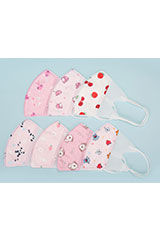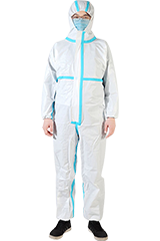NIOSH, KN, CE Mask Standard
N, KN, or FFP can usually be seen on masks. These letters refer to the standard divisions of mask filtration efficiency in different countries. The KN marked on the mask is the Chinese standard, N represents the US standard, and FFP is the European standard.
KN is a Chinese standard, and its detection method is the same as that of the United States. According to China's GB2626-2006 standard, masks are divided into KN and KP categories. KN means masks are suitable for filtering non-oily particles, and KP means masks are suitable for filtering oily particles and non-oily particles. The number after the letters represents the protection level of the mask. The larger the number, the higher the protection level. One of the common masks is KN90, which means that it can block at least 90% of 0.3 micron particles.
N is of NIOSH mask. The filter material and filtration efficiency of the mask are classified by the National Institute of Occupational Safety and Health (NIOSH). N95 is a concept proposed by the National Institute of Occupational Safety and Health (NIOSH) in 42 CFR Part 84 of the United States Code of Federal Regulations. It includes three series of N, R and P. The N series can block non-oily particles (including masks), and the relevant Chinese standard system does not have N95; in addition, N-series masks can be used to protect against particulate matter, including the spread of pathogens such as viruses, but it does not mean that all N95 masks can be used in the first-line medical field of epidemic prevention and protection.
The CE Standard of masks divides the particulate protection filter into two types: solid particle protection and liquid particle protection. What does that mean? That is, the CE standard masks are tested with solid and liquid substances. Nacl (sodium chloride) and DOP (paraffin oil) aerosols are used to test the transmission rate, and the protection classification of the mask is based on the transmission rate. They are: FFP1, FFP2, FFP3. The minimum filtering effect of FFP1 mask is ≥80%, the minimum filtering effect of FFP2 mask is ≥94%, and the minimum filtering effect of FFP3 mask is ≥97%. FFP masks are used to filter harmful substances such as oily particles and non-oily particles. These harmful substances include: dust, smoke, mist, poisonous gas and poisonous vapor, which are absorbed by the filter material to prevent them from being absorbed by the human body and inhaled by breathing. It is not difficult to find that the filtering effect is FFP3>FFP2>FFP1.




